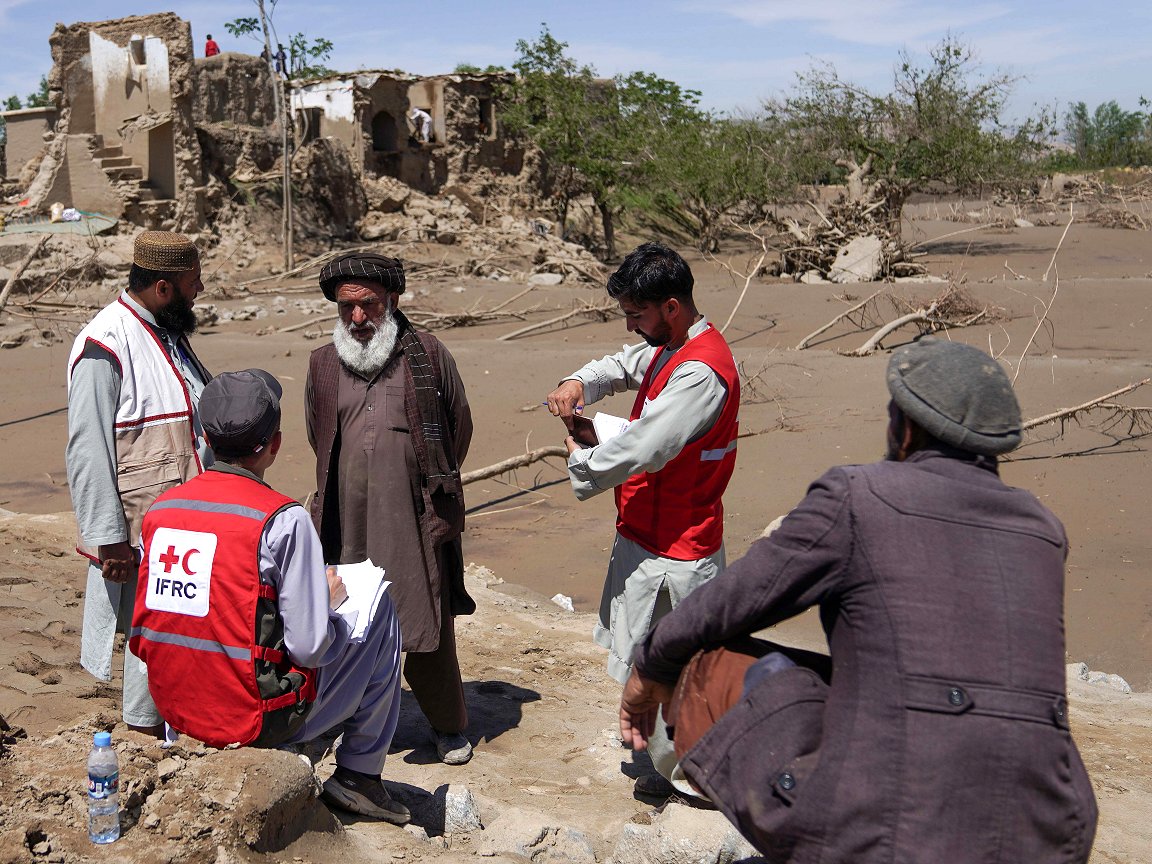
Afghanistan reels from successive extreme-weather events, on top of earthquakes and economic crisis

By the Climate Centre
The IFRC last week expanded its emergency response to lethal flash floods in Afghanistan that “have exacerbated an already-dire humanitarian situation”, a press release on Wednesday said.
On 10 May, flash floods swept across several north-east provinces, greatly aggravating the impact of earlier flooding from mid-April after unusually heavy spring rains – with that month recorded as among the three wettest Aprils of the past 40 years.
This followed an uncharacteristically late winter and cold wave that itself came on top of three consecutive years of drought that baked the soil hard and reduced its ability to absorb water.
Nearly three quarters of the entire country has now been affected by floods, with one of the worst-hit provinces, Baghlan, alone suffering more than 200 fatalities, the IFRC says.
An initial IFRC-DREF allocation of 750,000 Swiss francs has now been multiplied by ten in an emergency appeal for 7.5 million CHF, announced last week in Kabul, Kuala Lumpur and Geneva; it aims to facilitate assistance to 140,000 people.
‘Yet more pressure on an already-battered country’
A BBC film report from Afghanistan gives an idea of the scale of the destruction, with entire villages swept away by the sudden torrents of muddy water resembling inland tsunamis.
Necephor Mghendi, Head of the IFRC Country Delegation, said last week: “The level of suffering in Afghanistan is already beyond words.
“Our emergency response will focus on life-saving essential needs, while also gearing up to support affected households in early recovery as well as equipping first responders to cope better with rapid-onset disasters in the future. This new disaster is piling yet more pressure on a country already battered.”
Even before the last flood disaster, out of 185 countries Afghanistan was already ranked most exposed and least able to adapt to climate change by the Notre Dame Global Adaptation Initiative.
An estimated 4 million Afghans are now in urgent need of humanitarian assistance as the country faces its fourth consecutive year of drought and the third of “crippling economic decline, while it is still reeling from the pre-existing effects of decades-long conflict,” the IFRC says.
Several strong earthquakes also shook western Herat province last year.
Mawlawi Mutiul Haq Khales, Acting President of Afghan Red Crescent Society, adds: “Our volunteers were the first on the scene [after the floods] and have excellent knowledge of the area and needs.
“Our focus is now on making sure we can act as fast as possible to support the victims, bearing in mind the scale of the floods across the country and that there may yet be worse to come. Many of those affected are extremely poor and will be waiting and looking toward our support”.
‘The international community should rethink its approach to Afghanistan’
The ARCS, IFRC and Movement partners have sent multi-skilled teams to the hardest-hit areas to deliver emergency healthcare, distribute food and non-food relief, and establish temporary shelters.
“The floods are yet another reminder that the international community needs to have a radical rethink about its approach to Afghanistan by tackling the root causes of vulnerabilities,” Necephor Mghendi adds.
“This includes investing in strengthening early warning systems, capacity building, and programmes that can spur economic regeneration so that communities can respond better to future similar shocks with resources available locally.”
However, last year because of a lack of humanitarian funding the UN said it had been forced to reduce food aid to Afghanistan, along with Syria, Bangladesh, the Occupied Palestinian Territories and Yemen.
The most recent (2017) profile of disaster risk for Afghanistan compiled by the Global Facility for Disaster Reduction and Recovery rates floods as “the most frequently occurring natural hazard” and, with drought, “the most obvious impact of climate change“.
Afghan Red Crescent personnel assess the damage in what’s left of a village hit by flash floods last week. (Photo: Meer Abdullah Rasikh/IFRC)